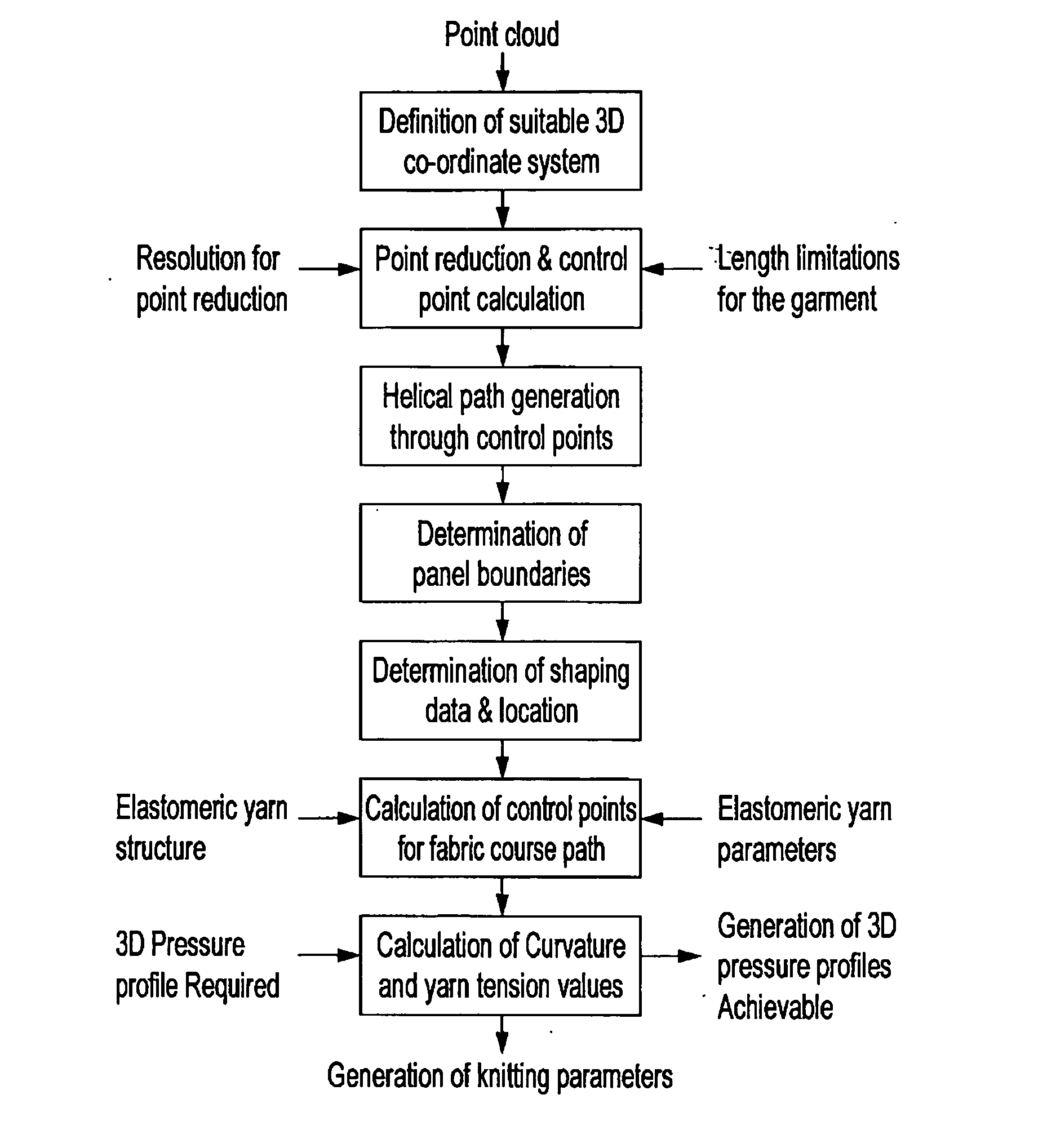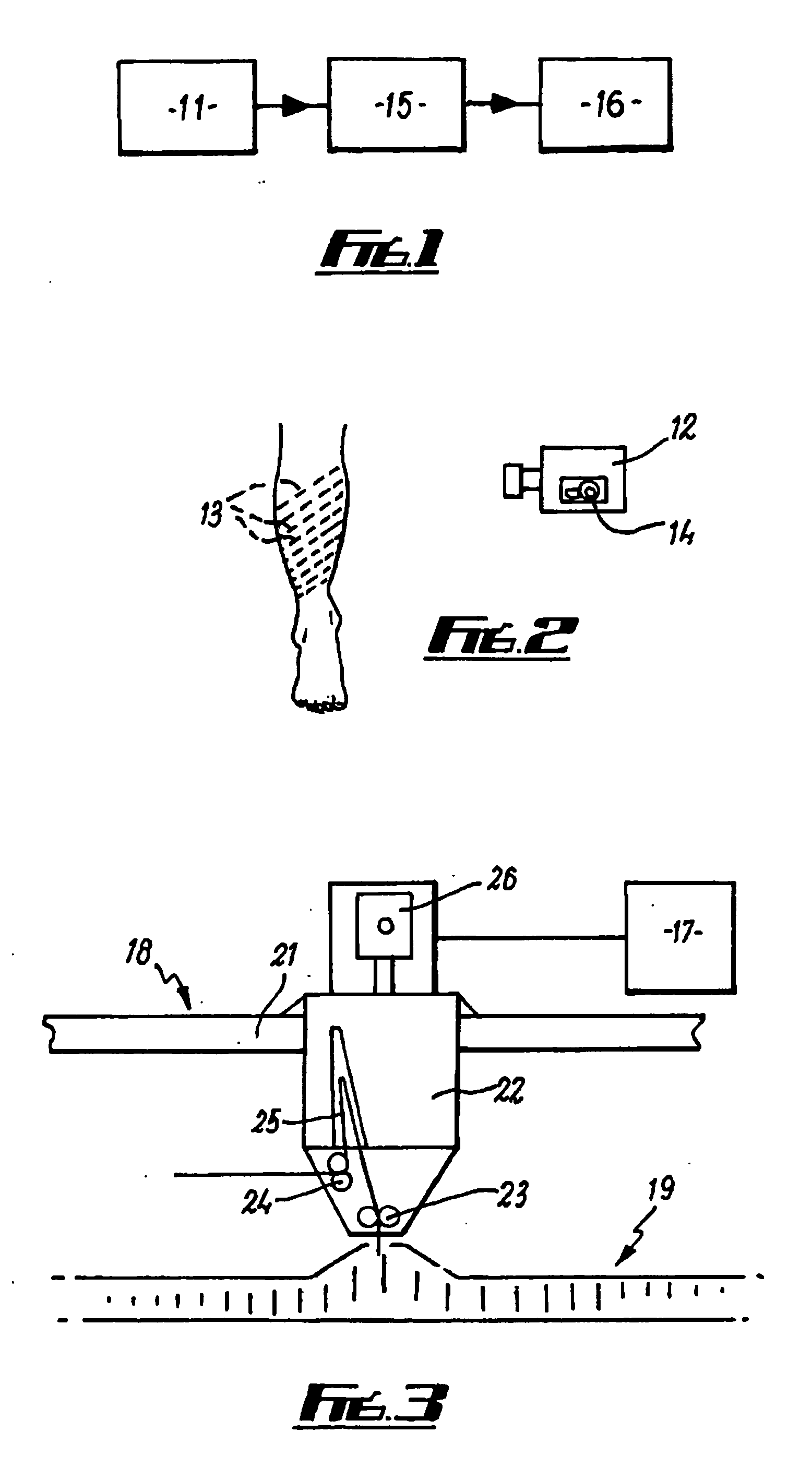Pressure garment
a technology of pressure garments and pressure bands, applied in the field of pressure garments, can solve the problem of high price of garments, and achieve the effect of stiffering the fabric structur
- Summary
- Abstract
- Description
- Claims
- Application Information
AI Technical Summary
Benefits of technology
Problems solved by technology
Method used
Image
Examples
Embodiment Construction
The drawings illustrate making a pressure garment comprising the steps of: defining shape and pressure characteristics of a garment specifying a knitting pattern for the garment calculating yarn feed data for the knitting pattern to produce the desired shape and pressure characteristics; and, knitting the garment according to the knitting pattern and the yarn feed data.
The 3D shape and the dimensions are defined in a body scanner environment 11, FIG. 1. The part of the body at issue is scanned to determine its shape and dimensions—see FIG. 2 (e.g., the leg is being scanned by a commercially available scanner 12).
Pressure profiles and characteristics may be defined on the 3D scanned image. This information is matched with a suitable knitting pattern. In FIG. 2, the leg with lines corresponding to course lines in the finished garment which the medical practitioner may colour code (if it is a colour scanner) or make darker or lighter shades to indicate a pressure profile, addi...
PUM
| Property | Measurement | Unit |
|---|---|---|
| pressure profile | aaaaa | aaaaa |
| shape | aaaaa | aaaaa |
| dimensions | aaaaa | aaaaa |
Abstract
Description
Claims
Application Information
 Login to View More
Login to View More - R&D
- Intellectual Property
- Life Sciences
- Materials
- Tech Scout
- Unparalleled Data Quality
- Higher Quality Content
- 60% Fewer Hallucinations
Browse by: Latest US Patents, China's latest patents, Technical Efficacy Thesaurus, Application Domain, Technology Topic, Popular Technical Reports.
© 2025 PatSnap. All rights reserved.Legal|Privacy policy|Modern Slavery Act Transparency Statement|Sitemap|About US| Contact US: help@patsnap.com



